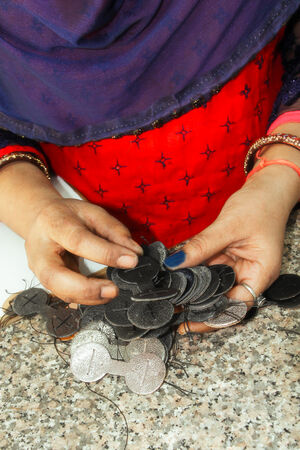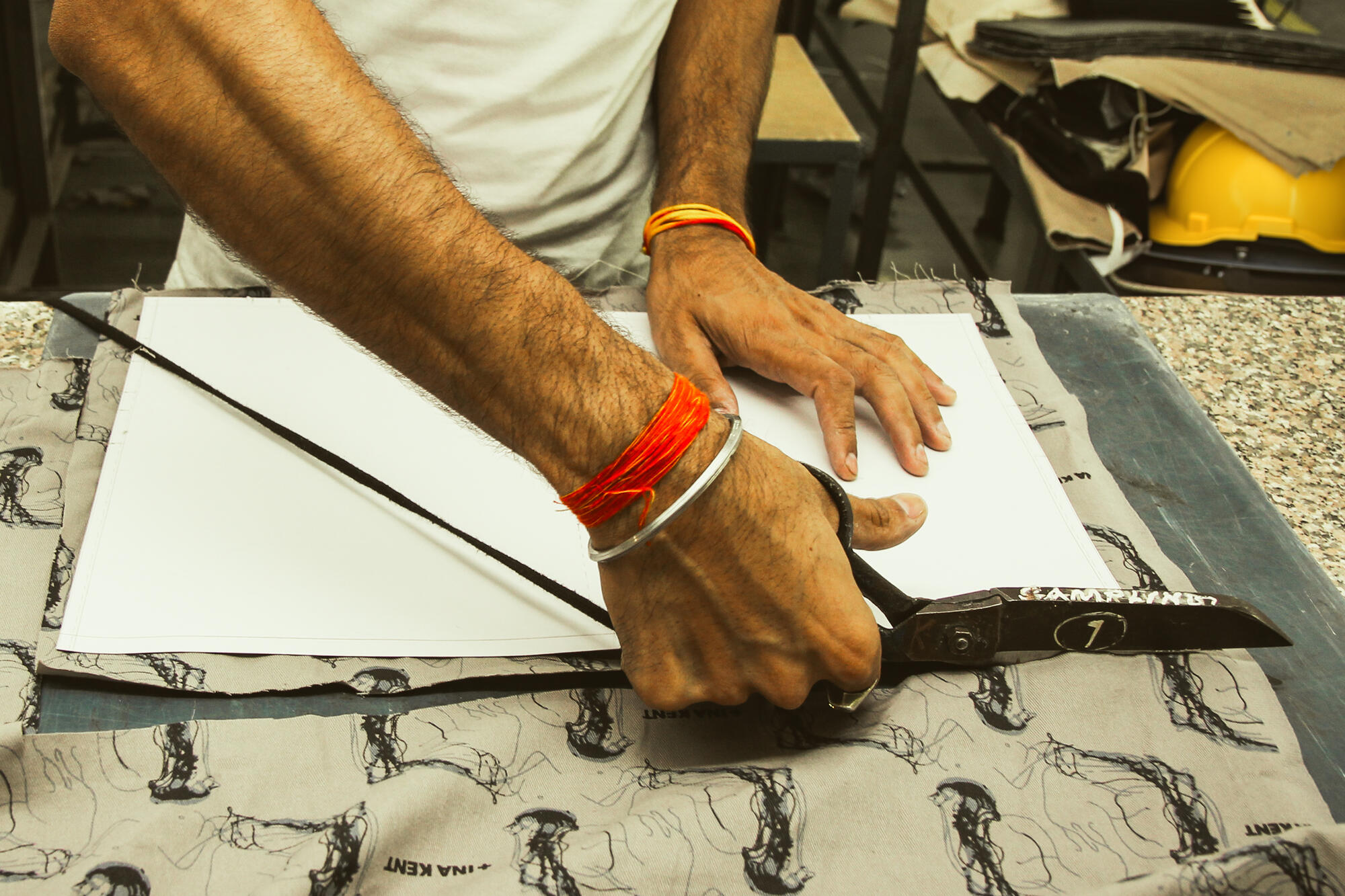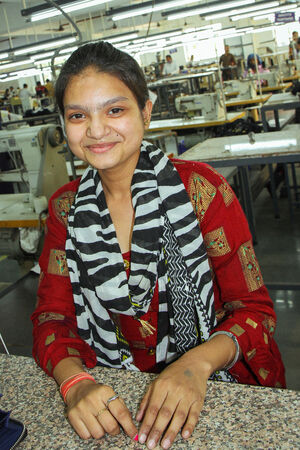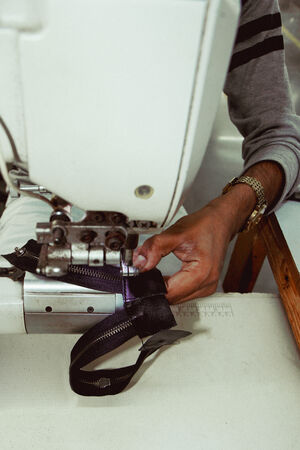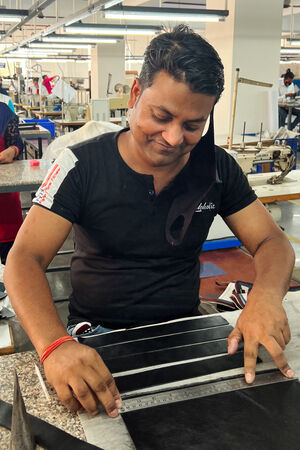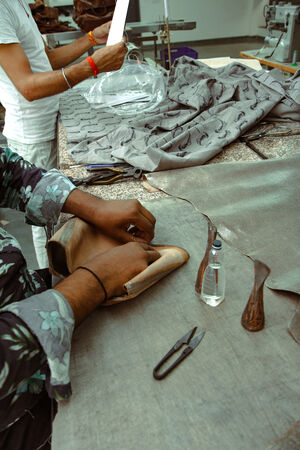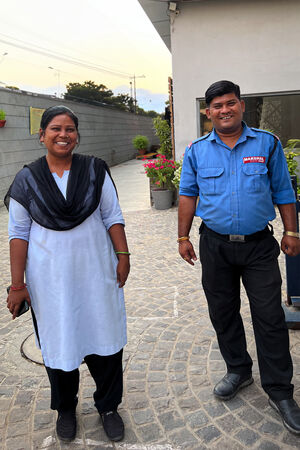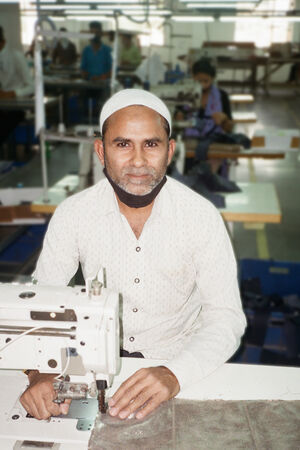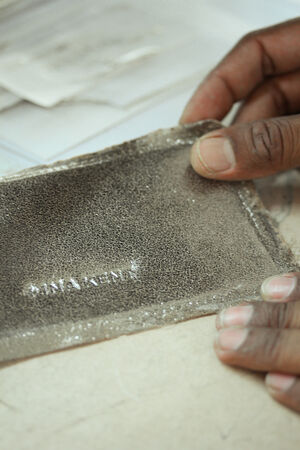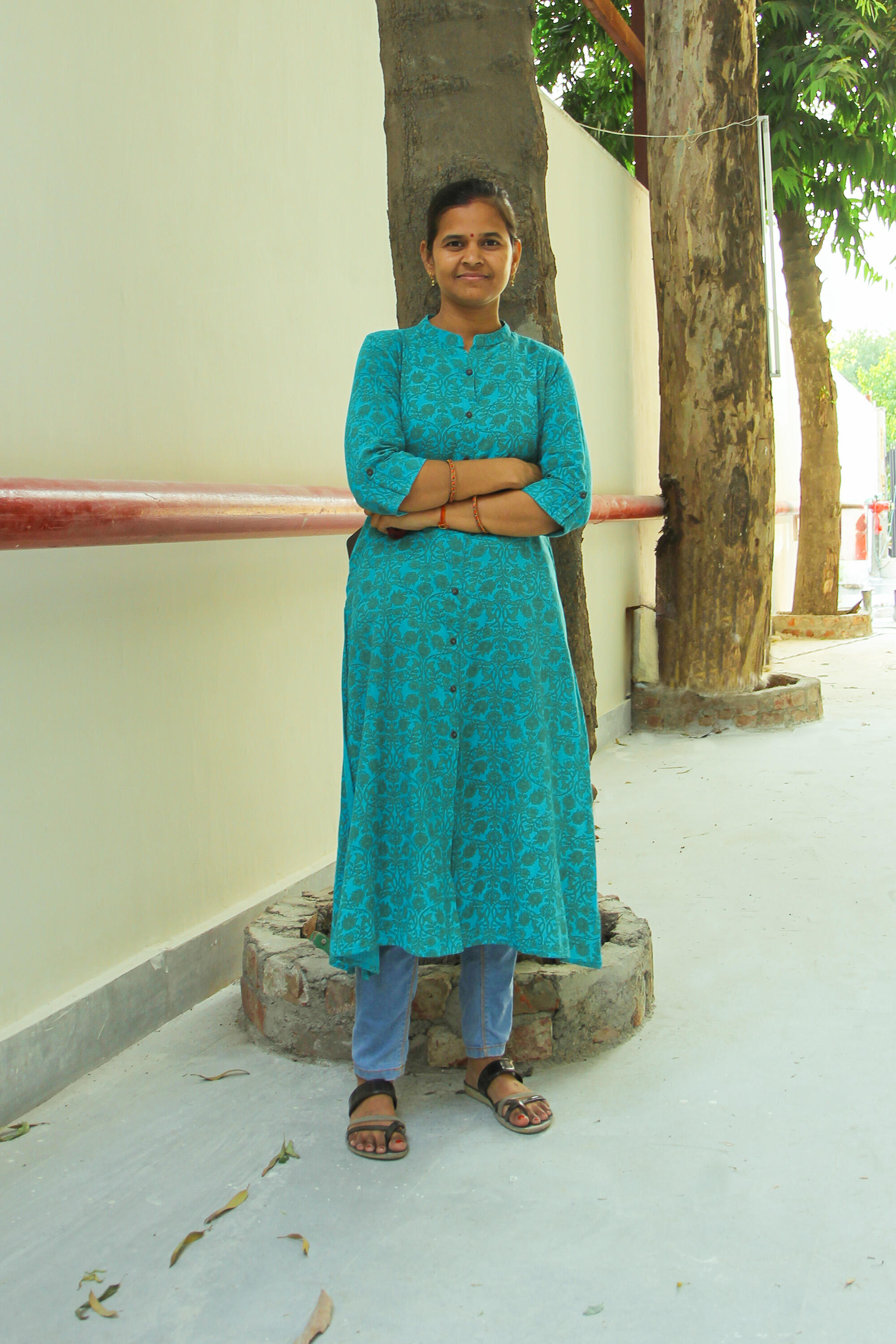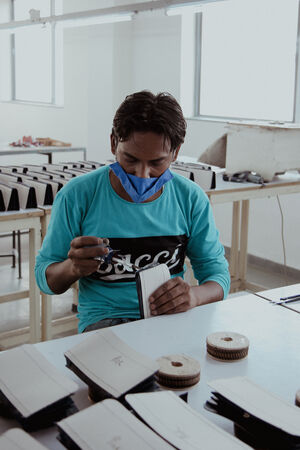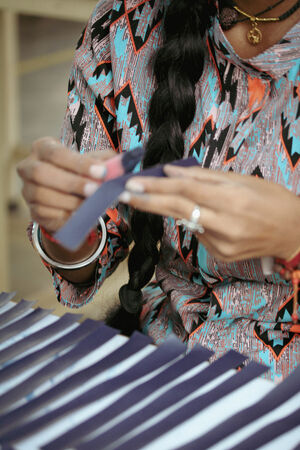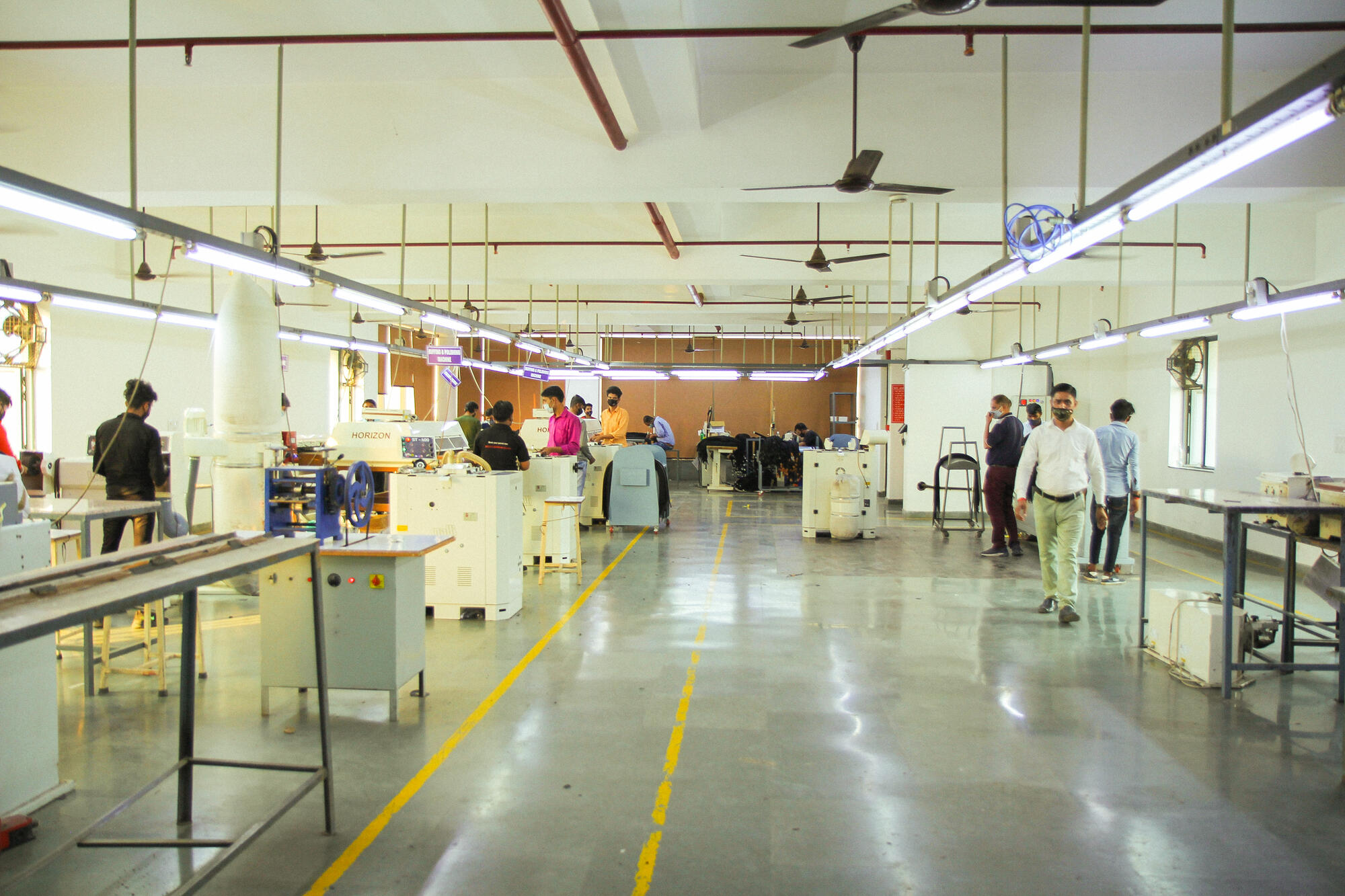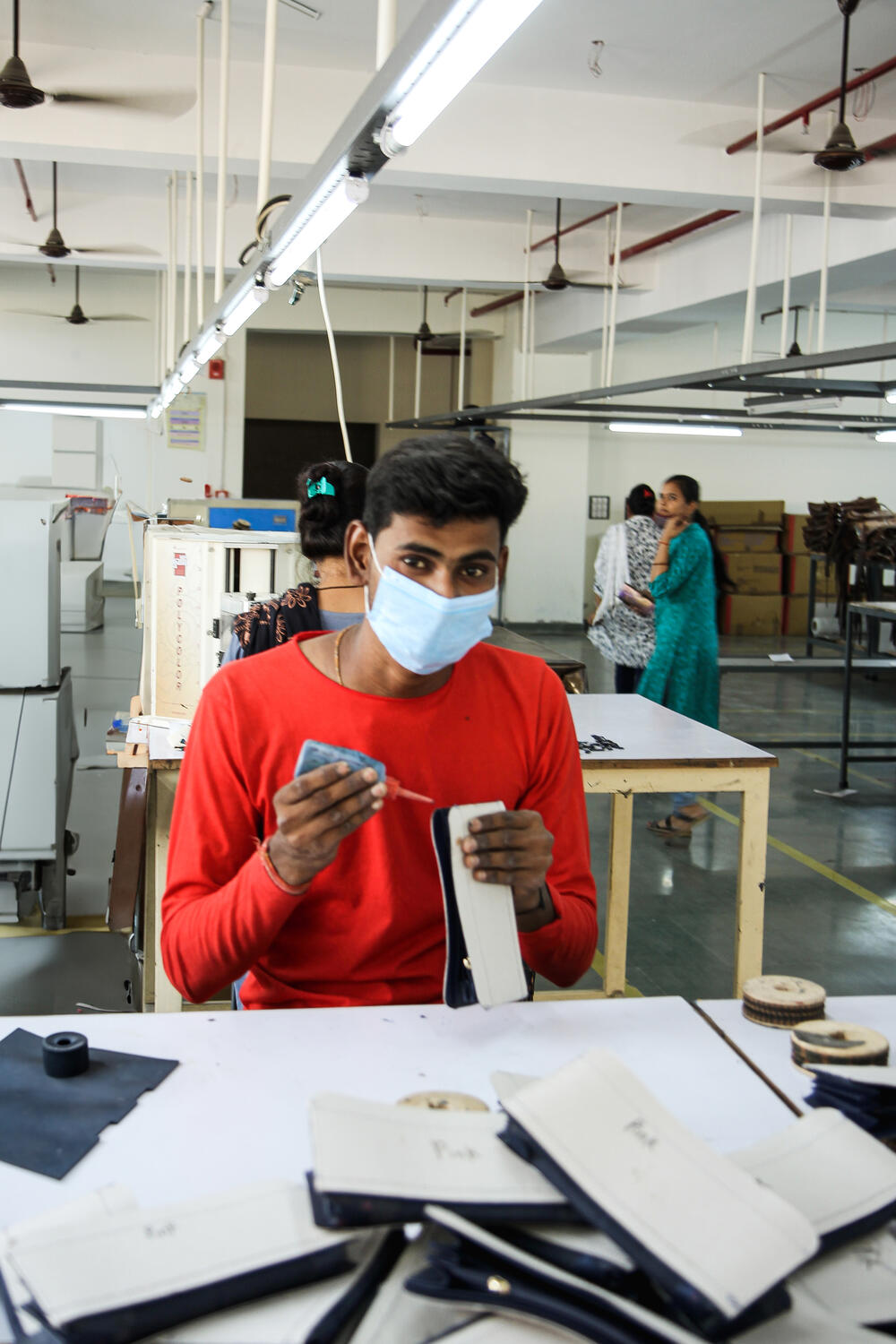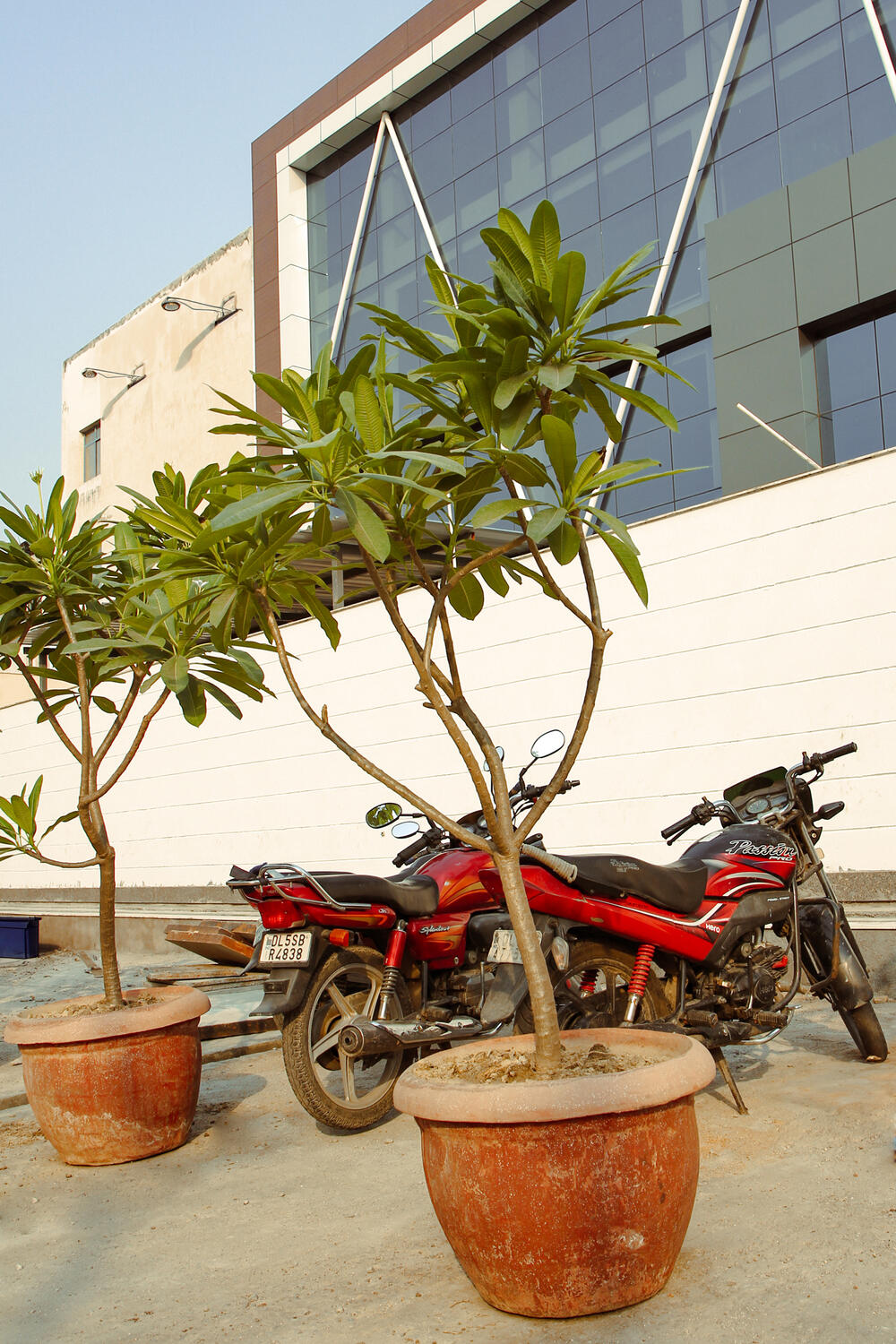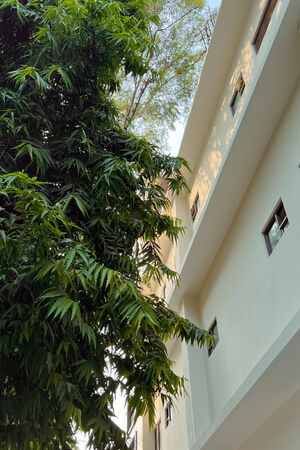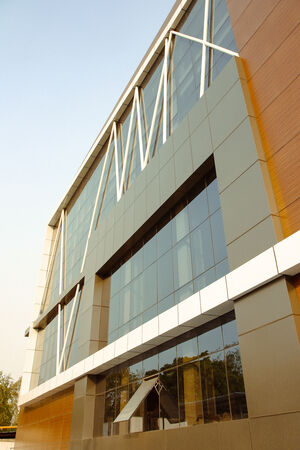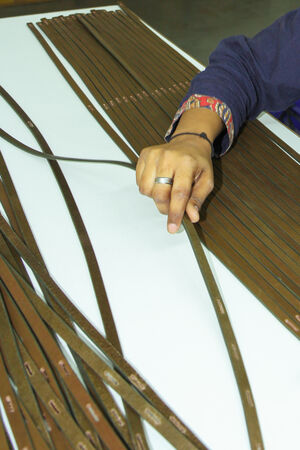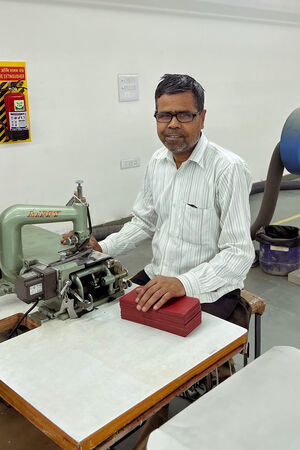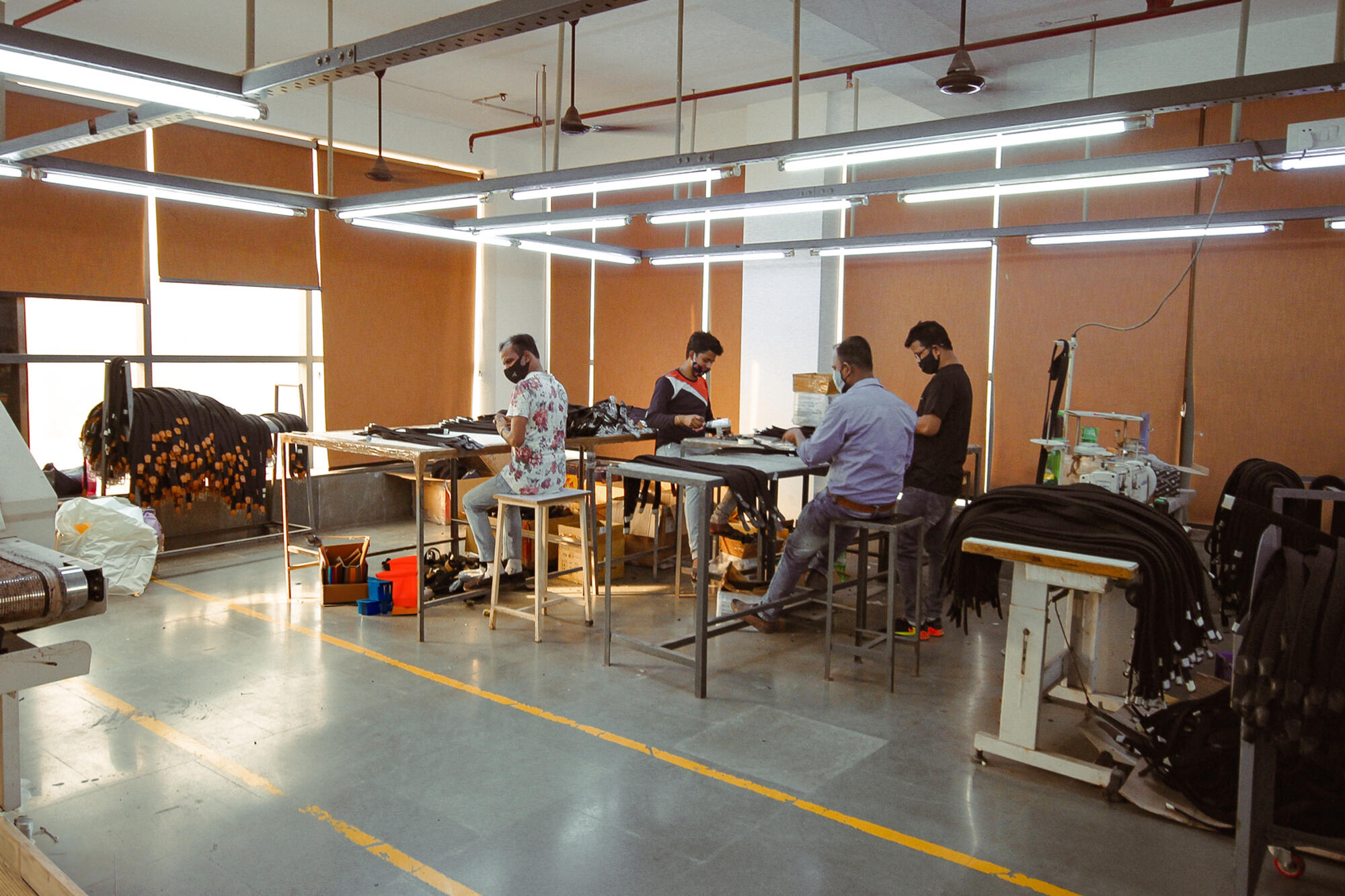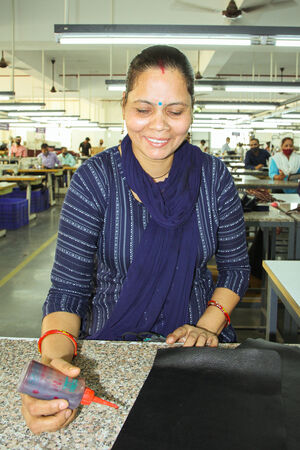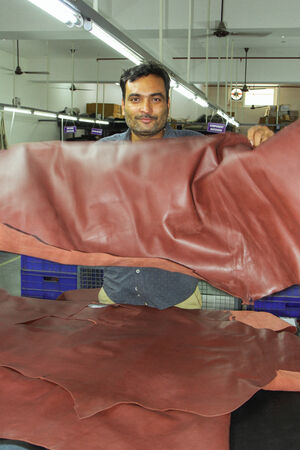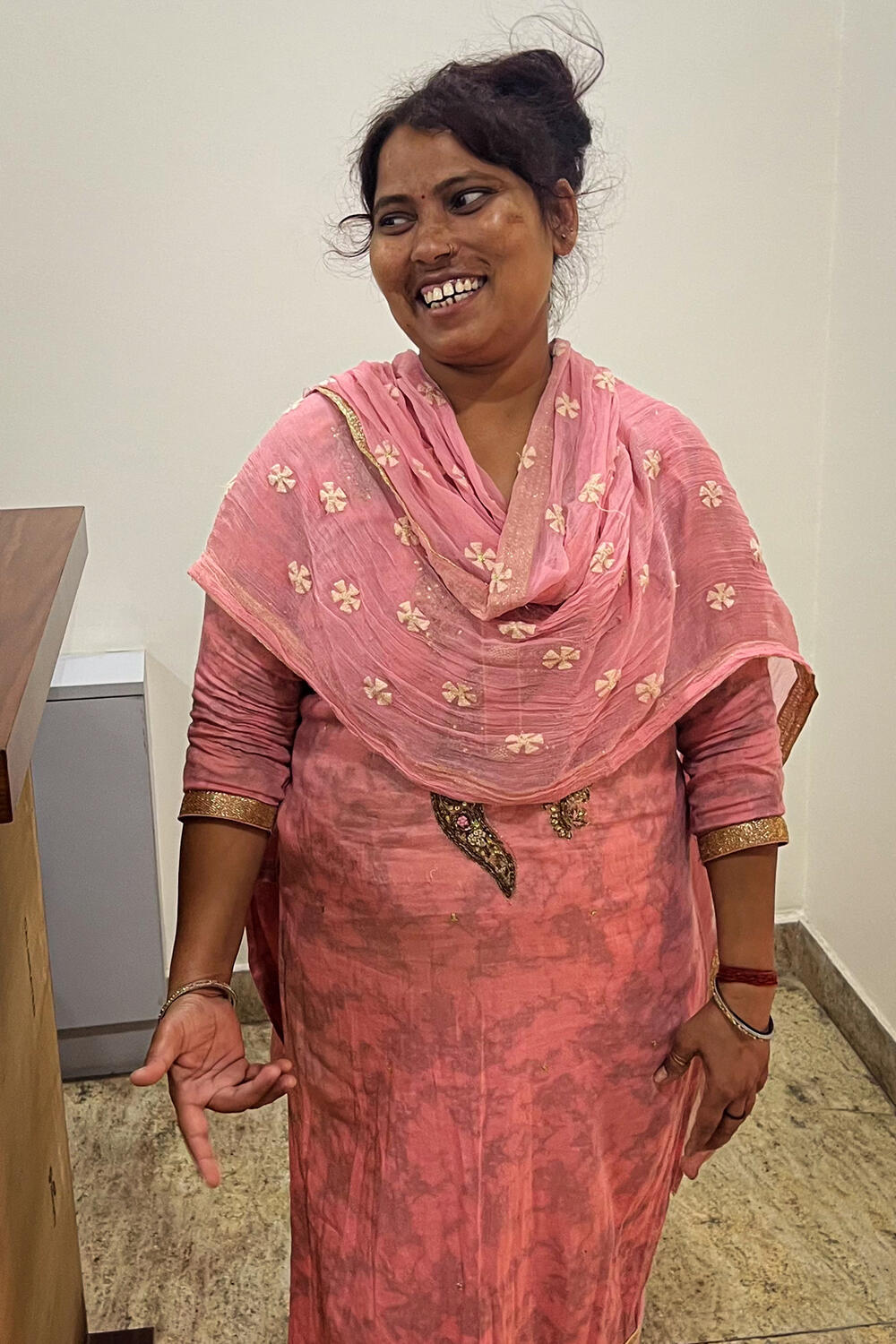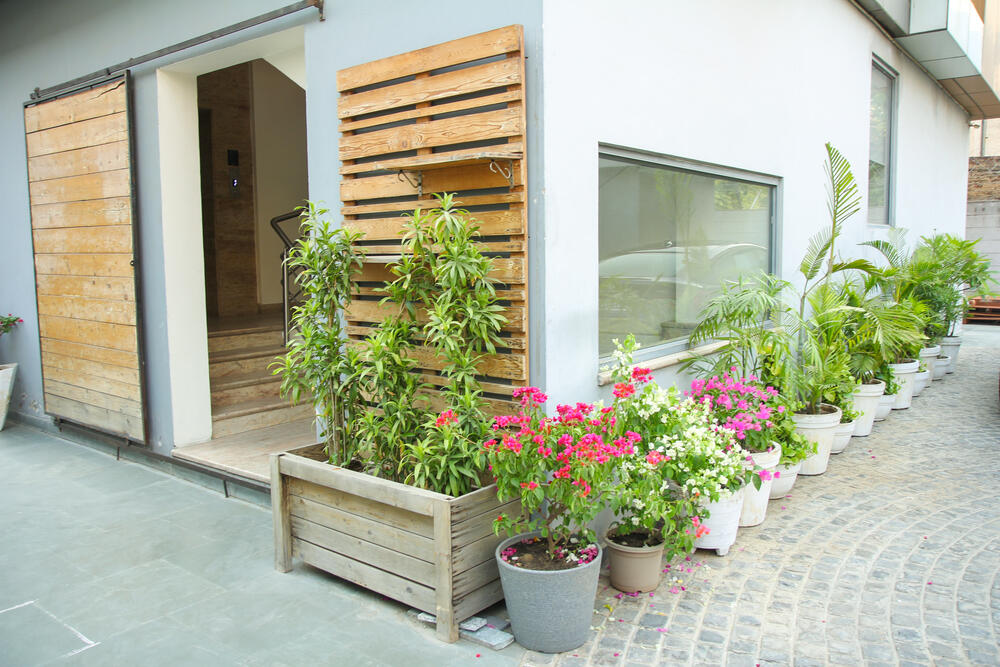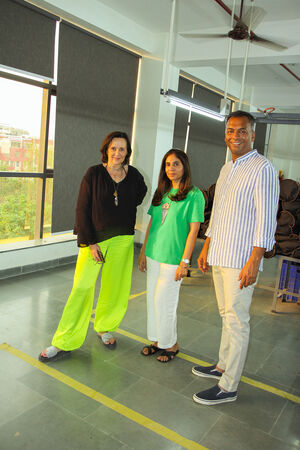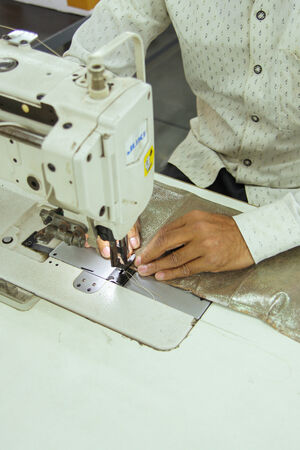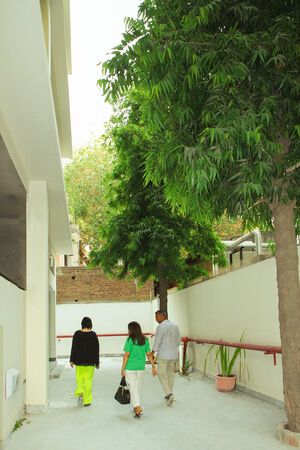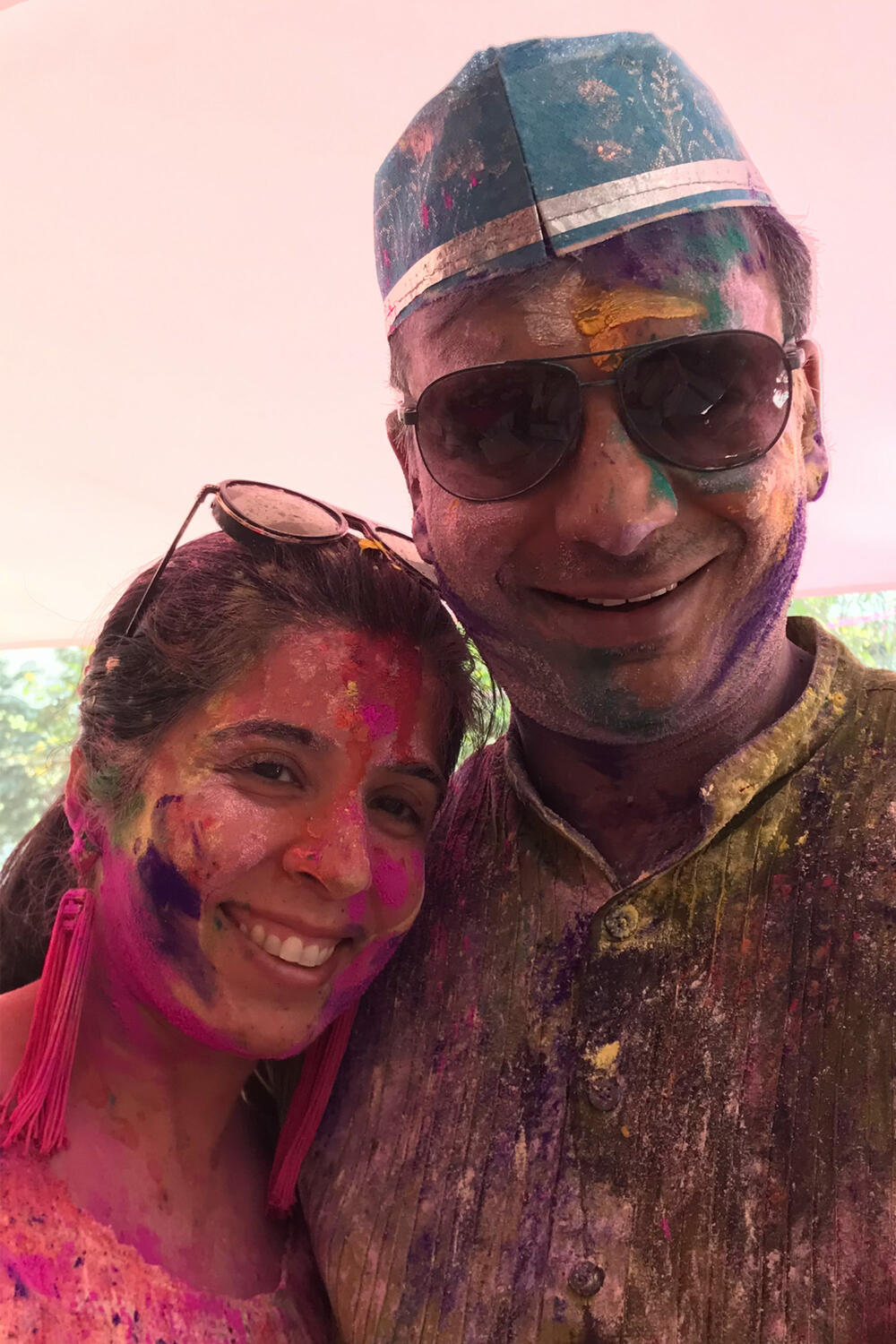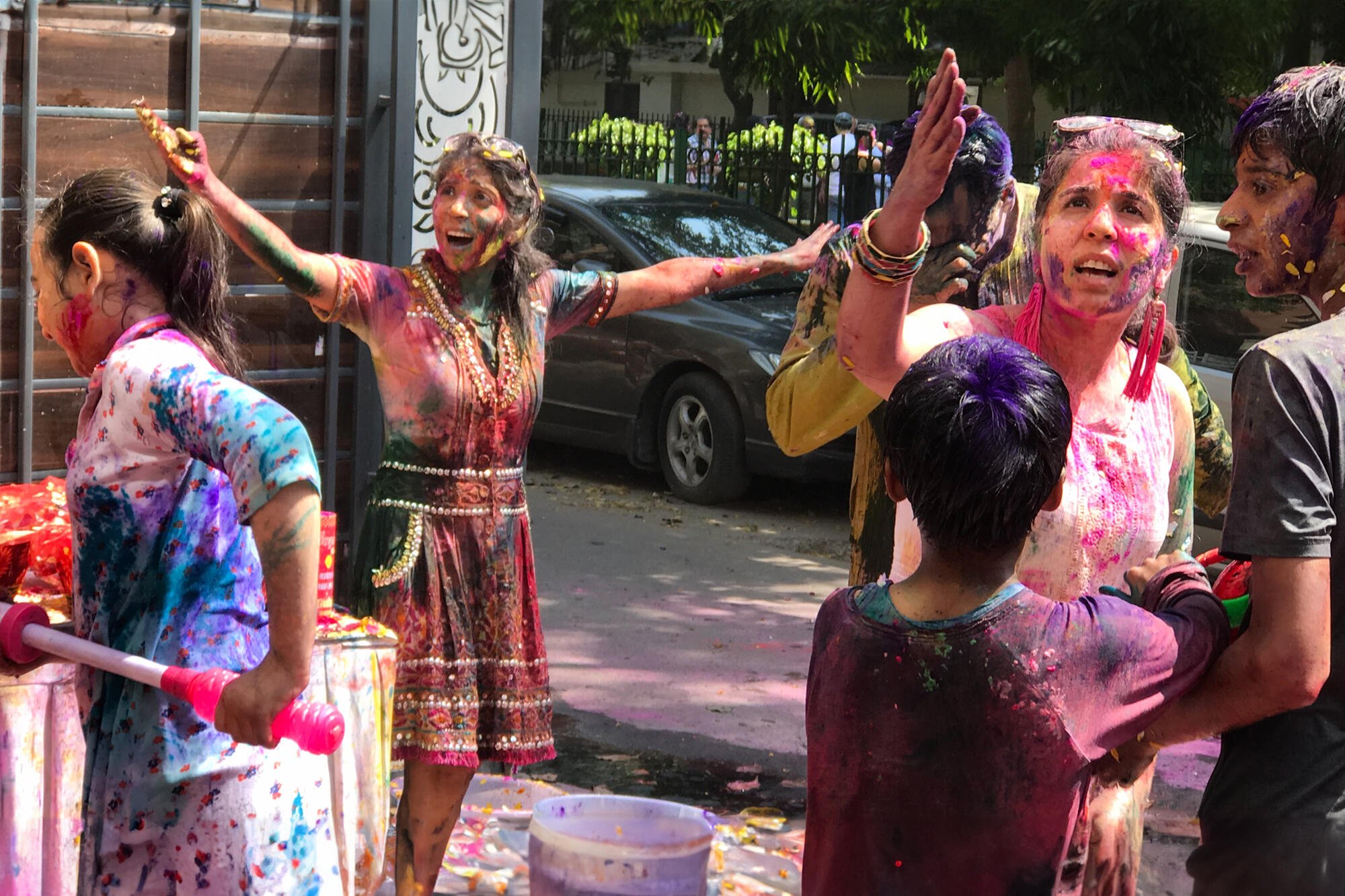Since day one, we have considered it a fundamental principle to produce as responsibly and socially consciously as possible. We carefully select our partner companies, making decisions only after a thorough process and on-site inspections. We ensure that our social values and quality standards are shared, fostering a friendly relationship. Therefore, we can guarantee that fair working conditions prevail in our partner firms. Fair means: reasonable working hours, fair wages, social protections, and workplace safety. We continuously screen potential new production companies that meet our high and comprehensive standards regarding fair working conditions, quality, and price.
For many years, our products were crafted in a traditional establishment in Slovakia. Changing demands – our products now require a multitude of intricate fabrication steps – as well as the need to provide sufficient quantities, prompted us to seek a new partner company. Since 2020, we've been manufacturing in an innovative Indian facility in Uttar Pradesh, near New Delhi. Within this context, we have found a company where both labor and production conditions meet high standards, and whose principles and activities are aligned with our values. Efforts towards sustainability, social responsibility, and a culture of respectful and fair collaboration are inherent in our partner company.
Naturally, we are mindful that long transportation routes leave a significant ecological footprint. Just as in many other supply chains, it's important to consider not only the transport routes of the finished products from our partner to our end customer, but also the journeys of leather raw materials and necessary components like clasps or rivets. In such intricate processes, our constant endeavor is to make the best decisions based on responsible considerations and to act in accordance with our values.
We're always striving to make choices with the aim of minimizing the social and ecological impacts across the entirety of our company. Read more about it here.
Dear Hemant, where does your company source the leather that is used in processing?
Most of the raw hides come from Italy and France, some of them come from India.
When it comes to leather, it seems like transparency falls short. Can you, as a company owner who sources the leather from tanneries, trace back where the raw hides come from?
This is clearly an issue, but since sustainability and transparency is our top-priority, we are solely working with LWG-certified tanneries. We only work with gold-rated suppliers, a few of them are silver-rated¹. Also, we have been working with the same partners for 10–15 years, the personal relationship is crucial to us. It is also important that all steps of production (tanning, finishing etc.) are done in one house i. e. within one company. I won’t work with anyone who is outsourcing parts of the production process.
Do you or the tanneries you work with use hides from feetlot cattle?
I can’t give you a qualified answer to that. But the thing is that the tanneries we work with, only source hides of highest quality. If the cattle are treated badly, the hides will show signs of a bad treatment. And in order to process these bad-quality hides, one must go a long way, using a highly-pigmented dye in order to make the product look fine in the end.
All of India's most widely practiced religions have dietary laws and traditions - Hindus also avoid eating beef because cows are traditionally viewed as sacred. If cows are considered sacred, why is it allowed to slaughter them? Do beef products even have a market within India?
Cow protection is a sensitive and also complex subject in India as it is an emotional issue for Hindus. But agricultural policy, including cattle slaughter, is a state subject. Indian Constitution suggests that states should consider preventing cattle slaughter. In conclusion, most states – especially in the northern, central and western parts of India – prohibit cattle slaughter for all ages, including for both female and male calves. Some states such as Maharashtra and Andhra Pradesh have legalized cow slaughter with certain conditions that the cattle must get "a "fit-for-slaughter" certificate ². Other states including Kerala, Assam and Meghalaya have no legislation regarding slaughter of any cattle. We are sourcing the hides only from these parts of India. Cattle farms are legal in these areas since the meat of cows, calves, bulls, bullocks and buffalos is openly sold and consumed here.
According to your website, your company is striving towards being a solvent-free manufacturing facility by 2025. What efforts and measures are you planning to implement in order to fulfill your standards.
We are putting A LOT of effort in becoming sustainable, and we will definitely reach our goal to become solvent free be 2025. Our belt factory already is solvent free and 90 % of our bag and accessory factory is solvent free as well. We only use solvents for leathers that happen to have a high fat content … such as waxes and oils. We currently still use adhesive glues because bonding is a huge problem when working with fatty leathers. But we are working hard to get rid of it completely.
As a matter of fact, there are environmental costs that come with leather production. Yet it is a material that lasts for decades. You have been working in the business for a long time – what have been good developments regarding a potential more sustainable approach? Can leather ever be sustainable?
This is just my opinion, and I am very aware that there are many angles to that. I think that leather is as sustainable as any fiber can be. As long as people are willing to eat meat, there will be leather. It’s important to only use hides that are a byproduct of meat production. And also, honestly, the methods of tanning must change. I’m all in for a greener tannage. That way leather becomes biodegradable. Unfortunately, this costs a lot. This means that, in the end of the day, the consumer has to decide to spend more on good quality … and buy less.
According to your website your company has high standards in terms of values. May I ask you what are your personal standards in terms of corporate responsibility and what are your wishes for the future in that matter?
We also set CSR-standards and currently we are working / partnering with two different NGOs (operating within India) that make efforts towards women empowerment and child education.
What about the salaries of your employees – are they working minimum wage?
All of our workers are paid according to minimum wages. Depending on whether they are unskilled, semi-skilled or skilled, they will get a higher salary according to the category they fall into – and most of the times they are paid even higher salaries than the minimum wage of the category they fall into.
Austria, Europe: Why did you chose to produce in India?
The production of leather goods in Europe has largely shifted to being primarily centered in Italy. While there are still a few production facilities in Portugal, Romania, and a handful of other Eastern European countries, the industry's significance in these regions has dwindled.
It's important to take into account the fact that such manufacturing processes still heavily rely on manual labor; very few aspects of the process can be fully automated. Considering the high cost of living in Europe, it's evident that if these products were to be made here, they would either need to be priced at a premium level or produced under less-than-ideal working conditions. Unfortunately, the reports about the labour conditions in Italy, which often involve Chinese workers working under harsh conditions and receiving low wages, do reflect a certain reality.
Upon hearing the phrase "production in India," many tend to jump to conclusions. How do you respond to these critical voices?
In my opinion, these stereotypes have started to lose their impact. Many people now recognize that even in countries like India, there are entrepreneurs who prioritize values and maintain a respectful approach towards their employees and the environment.
Even from animal welfare organizations, one often hears that leather sourced from countries like China, India, or the USA can be inherently problematic due to their lower animal welfare standards. How can you ensure that the leather used for our bags doesn't fall into these categories?
When it comes to supply chains and the origins of materials, establishing a strong foundation is possible through collaborations with responsible partners. Our Indian production partner can provide all the necessary certificates, demonstrating that they only work with partner companies and tanneries that meet specific requirements, adhere to various mandatory standards, and hold their suppliers to the same expectations. This strict supply chain ensures that we are embedded in a reliable and trustworthy system. Additionally, it's important to note that poorly treated animals yield leather with subpar quality. Naturally, this would be a big issue for the types of leather we use.
From your perspective, what responsibilities should companies assume today, and should they possess an exemplary role?
I believe each one of us holds an exemplary role. For companies, their impact on society, resources, and the environment is only amplified.
The following photos were captured during Ina Kent's visit amid the backdrop of the Holi Festival of Colour in Delhi. The Holi Festival, also known as the "Festival of Colors," is a Hindu spring festival that celebrates the arrival of spring and the triumph of good over evil.³ Ina was invited to celebrate the festival with Hemant and his family, who maintain the tradition of hosting the festival every year in the garage of a different family member. It has also become a tradition that the garage, saturated with a variety of colors, is freshly painted after the conclusion of the festival.
¹ The LWG protocol has “critical” sections as well as “non-critical” ones. The first have a specific score given to each aspect, that end up defining the final rating. The non-critical ones do not influence the score. For example, the first ones include the permits requested by the environmental legislation and regulations. But water and energy consumption, the type of process utilized and choice of external providers, all go in the final score. If a tannery gets a score of 65, equal to a Bronze ranking, in one of the sections, while in the rest it reaches gold-lever points-amount, the tannery will still only be given a Bronze award.
² A certificate is given, if the animal has reached a certain age, is unfit or has permanently incapacitated for work. There are some differences and gradations as to when these properties apply. Read more about the State Legislations on Cow Slaughtering here.
³ During Holi, participants engage in spirited celebrations by throwing colored powders and water at each other, creating a vibrant and lively atmosphere. The festival fosters a sense of community, joy, and the sharing of love and goodwill among people. Holi is widely celebrated in India and has gained recognition and participation globally.
